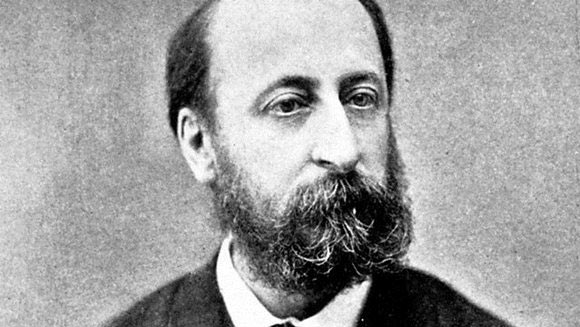
Camille Saint-Saëns was a prolific French organist, composer, conductor and pianist. He was a distinguished musician who enjoyed the company of Franz Liszt, Isidor Philipp and Gabriel Faure.
Charles-Camille Saint-Saëns was born in Paris, France on the October 9, 1835. His father passed away within four months of his birth, thus, he was very close to his mother. His mother invited her aunt, Charlotte Masson to her residence. Masson noticed Saint-Saëns’s great intelligence, and she was the first to give Saint-Saëns piano lessons at the age of two. She also noticed that he possessed the extremely rare ability which musicians called “the perfect pitch”. Saint-Saëns then studied the piano with Camille-Marie Stamaty, and went on to perform give his first public recital at the age of ten, which was besides his performance at the age of five when he performed alongside a Beethoven violin sonata. Saint-Saëns first recital earned him plenty of popularity, as he offered to play any of Beethoven’s 32 piano sonatas as part of an encore, which was a remarkable feat for any musician at the age of ten.
Saint-Saëns joined the Conservatoire de Paris at the age of thirteen. There, he continued to impress his teachers and peers, and his Symphony No.1 in E-Flat Major (performed in 1853) earned him praise and attention from various critics and composers, including Hector Berlioz. After his time at the conservatory, Saint-Saëns played the organ at the churches in Paris. He was noted for his improvisation ability that many recall as having ‘stunned greats’. Even Franz Liszt couldn’t escape Saint-Saëns’s magic; he stated in 1866 that “Camille Saint-Saëns was the greatest organist in the world”. In 1861, he started teaching the piano at the Ecole Neidermeyer, where he mentored future greats including Gabriel Fauré and André Messager. In 1874, Saint-Saëns wrote the Danse Macabre, which went on to inspire many Halloween Cartoons and Plays. In 1886, he wrote a masterpiece called “The Carnival of the Animals”, a piece which lasts a little over 25 minutes. Franz Liszt had become a close friend to Saint-Saëns over time, and his death in 1886 inspired Saint-Saëns to write his Symphony No.3, which he dedicated to him.
Saint-Saëns’s works were known to be extremely difficult and technical, so much so that no ordinary musician could replicate them. Works that were parallel to his name included his Violin Concerto No.3, the Cello Concerto No.1, the Havanaise in E Major, the Introduction and Rondo Capriccioso in A Minor, and the extremely popular opera called ‘Samson et Dalila’.
He is also known as one of the first major composers to write music for film. He wrote the score for Henri Lavedan’s “The Assination of the Duke of Guise” in 1908.
All in all, Saint-Saëns had an extremely prolific career; he composed over 300 works in all, including thirteen operas, four symphonic poems, five symphonies, five piano concertos, three violin concertos, and two cello concertos. Camille Saint-Saëns died of pneumonia on December 16, 1921 in Algeria. He was granted the honor of a state funeral in his hometown, Paris.